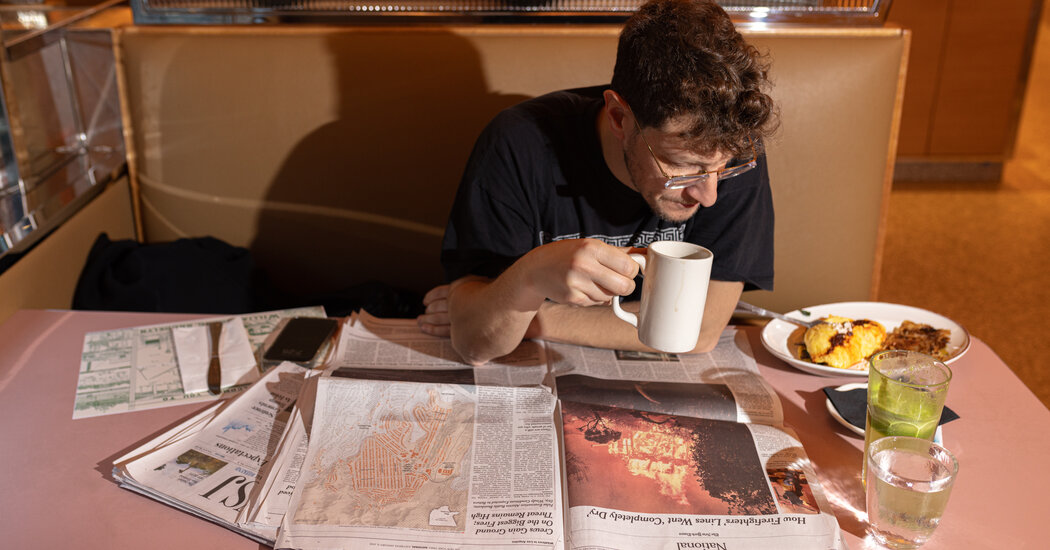There are few customers Conor Proft appreciates more than people who eat alone. A bartender at the Italian restaurant Fausto, in Prospect Heights, Brooklyn, he said that solo diners he serves tend to be more engaged and willing to chat. They are self-aware and more attuned to the restaurant’s rhythms. But does Mr. Proft dine alone? Rarely. “I love the romantic ideal of going into a restaurant and sitting at the bar and striking up a conversation with a bartender,” he said. “But oftentimes in practice, I am just consumed with anxiety about standing out.
This is part of the paradox of solo dining. Even as Americans are spending more time on their own, many find eating out alone to be rife with awkwardness and judgment. And many restaurateurs, who already run their businesses on thin profit margins, worry that tables for one will cost them.
Reservations for solo dining in the United States have risen by 64 percent since 2019, and 21 percent from 2022 to 2023, according to OpenTable. The increase in eating alone is probably even greater, given that many people simply walk in. The trend may stem in part from a post-pandemic uptick in business trips, when solo travelers need to grab a bite, or the rising attention given to self-care, said Debby Soo, OpenTable’s chief executive.
But more solo dining doesn’t necessarily mean better accommodation or less of a stigma, according to diners and restaurateurs interviewed by The New York Times. They have strong feelings about the topic: More than 2,000 readers responded in the 24 hours after we asked them to share their thoughts.
Several diners described the experience of entering a restaurant hoping to treat themselves to a relaxing meal, then feeling guilty for taking up space, or fearful that they’re being judged by everyone around them. “When you walk in by yourself, the look on the host or hostess’s face changes,” said Rajika Shah, a lawyer in Los Angeles who used to dine alone frequently, as she moved often for work and wanted to explore local dining. “It is sometimes a look of panic, like ‘What are we going to do with this person?’ Or sometimes it is a look of sympathy.”
Ms. Shah, 51, said she is often led to the worst table in the dining room, neglected by her server, and then rushed out at the end of the meal. She blamed the tipping system — because workers are reliant on tips, she said, they may be less attentive to those who spend less than groups.
“I am just so tired of being treated like a second-class citizen,” she said.
Even the menu can feel exclusionary: The shareable small plates that dominate many menus make it expensive and “difficult to eat a balanced and well-proportioned meal alone,” said Amanda Lao, 55, who lives in Chicago and started solo dining while traveling for her former job as an auditor.
Just a photo of someone eating alone can make people uncomfortable, said Jerry Hsu, a photographer in Los Angeles who started a project called “Table for One” in 2008, shooting solo diners. When he first posted the pictures on Tumblr without commentary, viewers accused him of mocking his subjects. “I was honoring them,” Mr. Hsu said. “They seemed very content.”
Source link




